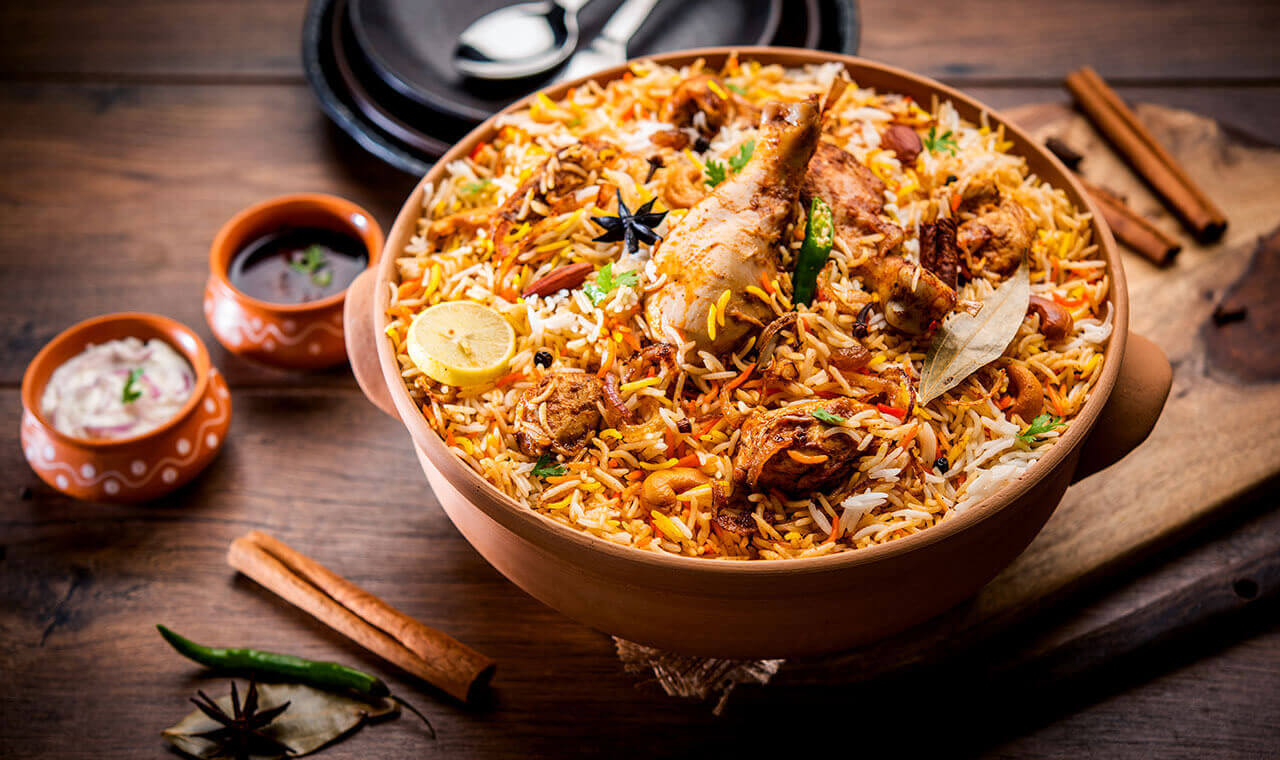Biryani, with its tantalizing blend of fragrant rice and succulent meats or vegetables, is a culinary masterpiece that has captured the hearts and taste buds of people worldwide. But do you know the fascinating history behind this delectable dish?
The Origins of Biryani
Biryani’s history can be traced back to the Indian subcontinent, where it was born from a harmonious blend of culinary influences. The dish’s exact origins are a subject of debate, with several theories suggesting different starting points. Some believe that Biryani was inspired by Persian pilaf, which traveled to the Indian subcontinent during the Mughal era. Others propose that Biryani evolved from the Indian dish “khichri,” a rice and lentil preparation. Regardless of its precise beginnings, Biryani’s evolution reflects the cross-cultural exchanges that have shaped the region’s diverse culinary landscape.
Biryani Across the Ages
As Biryani gained popularity, it found favor in the royal kitchens of medieval India. The Mughal emperors, known for their love of indulgent feasts, played a significant role in elevating Biryani to new heights. The dish became an integral part of lavish banquets, where it was served in exquisite silver and gold vessels. The Mughals’ influence contributed to the refinement and sophistication of Biryani, as royal chefs experimented with an array of aromatic spices and luxurious ingredients.
Regional Variations and Culinary Traditions
One of the most remarkable aspects of Biryani is its incredible diversity across regions. Each part of the Indian subcontinent boasts its own unique style of Biryani, shaped by local ingredients, cooking techniques, and cultural traditions. From the fragrant and subtly spiced Lucknowi Biryani to the fiery and flavorful Hyderabadi Biryani, the regional variations showcase the remarkable versatility and adaptability of this beloved dish.
Biryani’s Global Influence
Over time, Biryani transcended borders and embarked on a global voyage. As trade routes flourished, the dish spread to different parts of the world, carrying with it the essence of Indian flavors. In Southeast Asia, Biryani found a new home, adapting to local tastes and incorporating indigenous ingredients. The result was a fusion of flavors, as seen in the aromatic Nasi Biryani of Malaysia and Indonesia.
Biryani Today: A Culinary Legacy
In the modern era, Biryani continues to enchant food enthusiasts worldwide. Its timeless appeal lies in its ability to bring people together, transcending cultural barriers and celebrating shared culinary experiences. Whether it’s the vibrant colors of India‘s Kolkata Biryani or the rich flavors of Pakistan‘s Sindhi Biryani, Biryani remains an integral part of festive occasions, family gatherings, and everyday indulgences.

